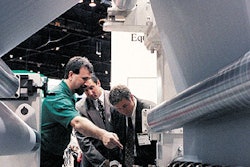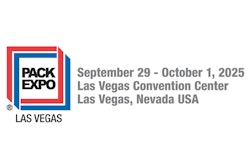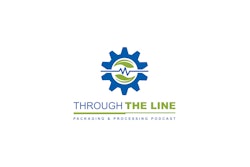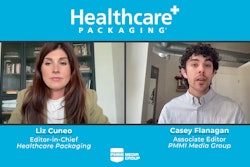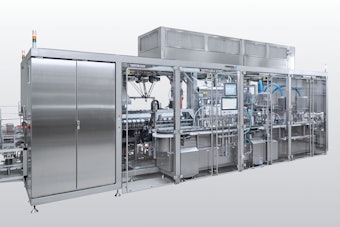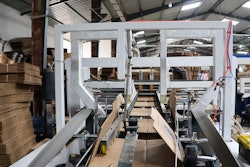Why should a jury get to decide if a company was negligent or its product was designed or labeled defectively, after the Food and Drug Administration declared the product safe and effective as it is?
When it comes to medical devices, they can't. The U.S. Supreme Court decided in February that the maker of a medical device that got through FDA's most thorough approval process should not have to face state claims that the product was designed or labeled wrong or that the company acted negligently, as long as the specific product was made, labeled, and packaged according to FDA specifications.
A maker of a mistakenly manufactured or labeled device would still be subject to potential liability for injuries caused by the device.
In a long-awaited and widely predicted decision, the Supreme Court interpreted that some explicit wording in the Federal Food Drug & Cosmetic Act "preempted" state or local requirements that are different from or in addition to federal ones. They said that liability for money damages under state law for claims like negligence or strict liability counted as "requirements," and were therefore prohibited.
Members of Congress quickly reacted to the decision by promising to change the law to overturn it. Meanwhile, the Supreme Court will soon take up a similar issue as it applies to drugs, rather than medical devices.
Medical device 510(k) filing
Medical devices include everything from simple items like surgical gloves and gowns to more complex electronics like MRI machines and even artificial limbs and heart pacemakers. Most devices are not cleared onto the market through the most thorough, premarket approval process, but instead through a so-called Section 510(k) filing, named after the relevant section of the law.
In essence, a 510(k) filing is a manufacturer's explanation to the FDA that its new device is substantially equivalent to a preexisting device. (In fact, many broad categories of devices are even exempted from the requirement to make that filing.)
The Supreme Court had ruled previously that devices cleared onto the market under Section 510(k) were not immune to state tort lawsuits, that is, that the "clearance" they got from the government under the 510(k) procedure did not preempt state lawsuits.
But by a dramatic 8-1 vote, the Supreme Court came up with the opposite answer for devices that are approved via premarket approval, a much more intensive and through review and approval of the device in all its aspects. The FDA reviews and approves such a device's safety, effectiveness, intended uses, method of manufacture, and labeling, among other details, and approves each specifically.
Expect future arguments
Another, different chapter in the preemption debate is already being written, as manufacturers of drugs have raised a similar argument in another case due to be heard by the Supreme Court later this year. Their argument is that, even though there is no explicit wording in the law that preempts state requirements that are in addition to or different from federal requirements regarding new drugs, the Supreme Court should find that they are preempted in order to avoid thwarting of the federal regulatory scheme.
If the Supreme Court finds that state tort actions against new drugs are preempted as well, it will represent an equally dramatic change in the legal landscape to the Reigel decision's effect on medical devices. Then the action will again turn to Congress to see if it wants to override that decision with a change in the law as well. [HCP]
--By Eric Greenberg, Attorney-at-Law
www.ericfgreenbergpc.com
[email protected]
Read more about regulatory issues at
www.healthcarepackaging.com/go/15
When it comes to medical devices, they can't. The U.S. Supreme Court decided in February that the maker of a medical device that got through FDA's most thorough approval process should not have to face state claims that the product was designed or labeled wrong or that the company acted negligently, as long as the specific product was made, labeled, and packaged according to FDA specifications.
A maker of a mistakenly manufactured or labeled device would still be subject to potential liability for injuries caused by the device.
In a long-awaited and widely predicted decision, the Supreme Court interpreted that some explicit wording in the Federal Food Drug & Cosmetic Act "preempted" state or local requirements that are different from or in addition to federal ones. They said that liability for money damages under state law for claims like negligence or strict liability counted as "requirements," and were therefore prohibited.
Members of Congress quickly reacted to the decision by promising to change the law to overturn it. Meanwhile, the Supreme Court will soon take up a similar issue as it applies to drugs, rather than medical devices.
Medical device 510(k) filing
Medical devices include everything from simple items like surgical gloves and gowns to more complex electronics like MRI machines and even artificial limbs and heart pacemakers. Most devices are not cleared onto the market through the most thorough, premarket approval process, but instead through a so-called Section 510(k) filing, named after the relevant section of the law.
In essence, a 510(k) filing is a manufacturer's explanation to the FDA that its new device is substantially equivalent to a preexisting device. (In fact, many broad categories of devices are even exempted from the requirement to make that filing.)
The Supreme Court had ruled previously that devices cleared onto the market under Section 510(k) were not immune to state tort lawsuits, that is, that the "clearance" they got from the government under the 510(k) procedure did not preempt state lawsuits.
But by a dramatic 8-1 vote, the Supreme Court came up with the opposite answer for devices that are approved via premarket approval, a much more intensive and through review and approval of the device in all its aspects. The FDA reviews and approves such a device's safety, effectiveness, intended uses, method of manufacture, and labeling, among other details, and approves each specifically.
Expect future arguments
Another, different chapter in the preemption debate is already being written, as manufacturers of drugs have raised a similar argument in another case due to be heard by the Supreme Court later this year. Their argument is that, even though there is no explicit wording in the law that preempts state requirements that are in addition to or different from federal requirements regarding new drugs, the Supreme Court should find that they are preempted in order to avoid thwarting of the federal regulatory scheme.
If the Supreme Court finds that state tort actions against new drugs are preempted as well, it will represent an equally dramatic change in the legal landscape to the Reigel decision's effect on medical devices. Then the action will again turn to Congress to see if it wants to override that decision with a change in the law as well. [HCP]
--By Eric Greenberg, Attorney-at-Law
www.ericfgreenbergpc.com
[email protected]
Read more about regulatory issues at
www.healthcarepackaging.com/go/15



